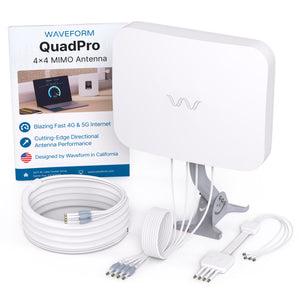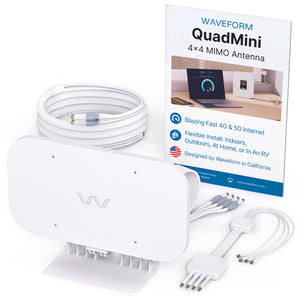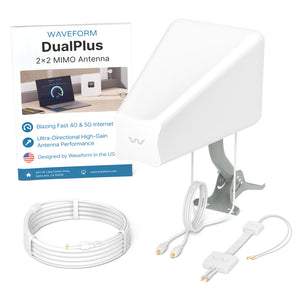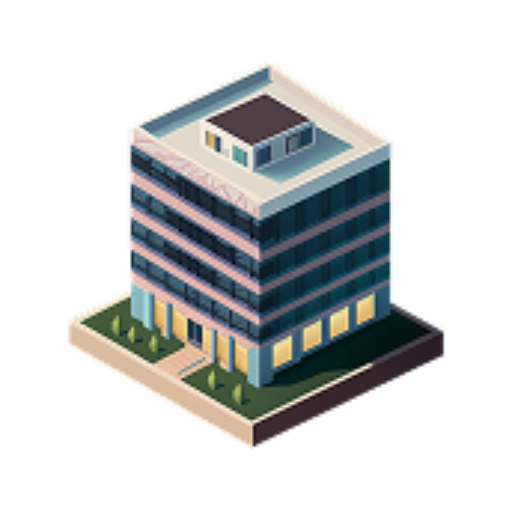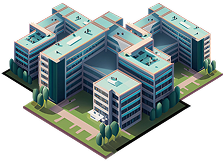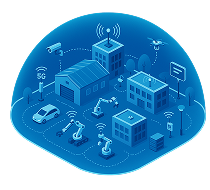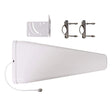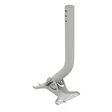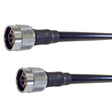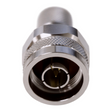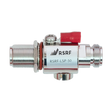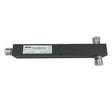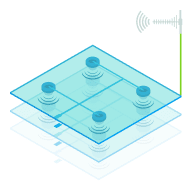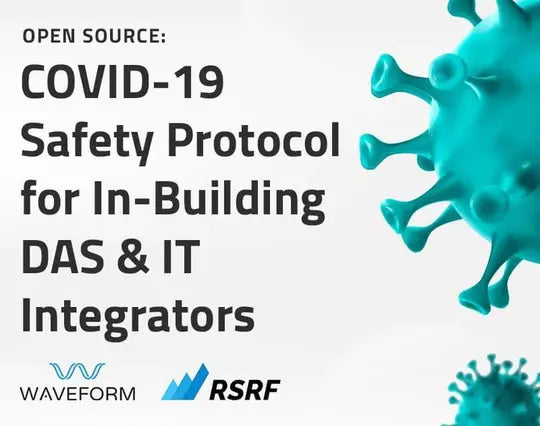As shelter in place orders begin to be lifted, our enterprise division, RSRF, is starting to resume public safety and cellular DAS deployments.
Our priority initially is serving the communication needs of critical customers like hospitals, power plants, and other essential utilities.
As we began the process of resuming work, we realized we needed entirely new safety protocols for our RF Engineers, Construction Managers, and our contractor partners.
We're sharing our new protocol as "open source" in the hopes that it helps other DAS integrators and IT professionals get back to work safely.
Waveform/RSRF COVID-19 Safety Protocol for Full-Time Employees and Contractors
The novel coronavirus (COVID-19) pandemic has shut down businesses across the country, and caused tens of thousands of deaths. As an installer of telecommunications equipment, RSRF is considered an “essential” business in most states.
In the first months of the outbreak, we’ve avoided all project sites to ensure the safety of our team. However, as shelter at home restrictions begin to be lifted, we will begin returning to work. As we do, it’s critical that both full-time employees and our contractor partners take precautions when traveling and on job sites.
Traveling and working on projects during this time is optional. If you have concerns about a specific project or would prefer not to be involved in a project, reach out to your project manager to let them know. Contractors and employees may opt-out of any project during this time if they feel uncomfortable with the project itself or the necessary travel.
This document describes RSRF’s Coronovirus Safety Protocol. By reading and signing this agreement you or your company are agreeing to follow all guidance provided in this document.
What We Know About COVID-19
Here’s a brief overview of what we know about COVID-19, and why it’s such a serious health and safety issue:
- The virus is extremely infectious. It passes from one person to another very easily.
- Those who become infected are contagious before they show any symptoms at all.
- Many of those who catch and pass COVID-19 onto others never show any symptoms. Others have only mild symptoms.
- However, at least 1% of those who catch COVID-19 die, generally from severe pneumonia.
-
The great majority of fatal cases are in those over 44 years of age, and particularly in those over 65. However, there are deaths in all age groups.
- The virus can live on surfaces for multiple days, but can easily be destroyed by using disinfectants like alcohol, or by washing with soap and water.
Even though many cases are mild or asymptomatic, each additional infection results in greater community spread. By being careful, we can protect both our loved ones, and help reduce the spread of the disease in society at large.
1. Personal Protective Equipment (PPE)
All full-time employees and contractors who are leaving their home, whether to visit a job site or one of our offices, should have the following safety equipment:
- Surgical face masks
- Respirators - (N95, KN95 types)
- Half-face reusable respirators - (GVS Elipse P100 or similar)
- Nitrile gloves
- Hand sanitizer (70% or higher ethyl or isopropyl alcohol)
- Copper door opening tools
This equipment will be furnished to full-time employees by RSRF. It is the responsibility of contractors to ensure that they have the aforementioned safety equipment. Contractors who are unsure of where to obtain PPE should reach out to the RSRF team for guidance on where to purchase.
Any full-time employees who are running low on any of the PPE equipment listed should reach out to RSRF's Safety Officer to have more stock sent to them well in advance of their next project visit.
Usage and Maintenance of PPE
Surgical Face Masks
- This is the most basic form of facial covering that should be used at all times.
-
How to use: Please read the surgical masks usage instructions here.
-
Reuse: Surgical face masks should be discarded after use. Do not reuse surgical masks.
Respirators

- Respirators offer greater protection and should be used during travel on any shared mode of transit (e.g. airplanes, busses, trains, etc), in any occupied building, and in any active construction site.
- Respirators come in two types: reusable, and non-reusable.
-
N95 and KN95 respirators:
-
Usage instructions:
-
Please review and follow the instructions here.
- A seal-check (described in the video above) is critical to using an N95 mask.
-
It’s important that any facial hair that might impede a correct fit is removed (see here).
-
Reuse: N95 masks should be discarded after use. Do not reuse N95/KN95 masks.
-
Half-face reusable respirators
-
Please review and follow the use, fitting, pressure face fit, and cleaning and maintenance instructions for the GVS Elipse P100 here.
Nitrile Gloves
-
Review and follow these guidelines on the use of nitrile gloves.
-
Remove gloves correctly by turning them inside out, and disposing of them immediately.
Hand Sanitizer
- We recommend keeping a small bottle (2 or 4 oz) of hand sanitizer in your pocket at all times, with a larger refill in your suitcase.
- Hand sanitizer should only be used when your hands are not visibly dirty and you do not have access to soap and water.
- We recommend using hand sanitizer with 70% isopropyl alcohol for best results.
- You can also use hand sanitizer to clean anything that has been exposed, including keys, phones, laptop keyboards, tools, and equipment.
-
Usage: Review instructions for using hand sanitizer here.
Copper Door Opening Tool
-
Coronaviruses like COVID-19 have been shown to live on Copper for around 25 minutes (source).
-
Usage: This tool can be attached to a belt buckle or keychain and used to open doors and press elevator buttons.
2. Before Project Deployment
Before you leave for each project, review the questions below with your project manager and the client. These questions help us as a team to evaluate the risks associated with visiting the job site.
- Have you or anyone who will be at the job site been in contact with a person who has tested positive or is in the process of being tested for COVID-19?
- Have you or anyone who will be at the job site been told by a medical professional to self-quarantine?
- Have you or anyone who will be at the job site had trouble breathing or had COVID-19-like symptoms within the past 72 hours (e.g., fever, dry cough, shortness of breath, tiredness)?
Is the answer to any of the above "yes" for you, one of our team members, or one of our contractors? If so, work with your project manager so that you or your contractor’s role in that project can be replaced, and travel arrangements canceled.
If the question to any of the above is true for other people on the job site – for example, if one of the client's employees has been diagnosed with, or shows signs of, COVID-19 – the project should be delayed until we can be sure there is no chance of exposure.
In general: we should wait at least 14 days since the last exposed person was at the project site, except in hospitals and other medical environments where precautions are being taken to control exposure to the virus.
3. General Guidelines for Travel & On Project Sites
- It’s best to think in “black and white” - consider any object or surface that has been touched by someone other than you in the last week as “contaminated” and sanitize if you need to touch it without nitrile gloves. Once it’s been cleaned, keep it separate from “contaminated” objects and surfaces.
- Wash your hands often with soap and water for at least 20 seconds. Use hand sanitizer if soap and water are not available.
- Avoid touching your eyes, nose, and mouth with unwashed hands.
- Avoid using other employees or contractors’ phones, laptops, or other work tools and equipment, when possible. If necessary, clean and disinfect them before and after use.
- Whenever possible practice social distancing and keep at least 6 feet away from others.
4. Traveling to Job Sites
Travel on Public/Shared Transit
Public transit is when you are at the very highest risk of catching of COVID-19. Where possible, we should avoid shared transit. For example, if we can reach a project site by driving instead of taking a flight or a train, we should almost always drive.
However, if it's absolutely necessary travel by plane, train, bus, or any other public or shared transit, the following protocol should be followed:
- Wear either an N95, KN95 or half-face respirator at all times, including at the airport, train terminal, or bus station until you arrive at your final destination.
- Sanitize all surfaces that you might touch (e.g. food trays on airplanes) with hand sanitizer and a paper towel.
- Wear nitrile gloves at all times.
Rental Cars
- Wear a surgical mask, N95, KN95 or half-face respirator, as well as nitrile gloves at all times when picking up your vehicle.
- Sanitize all surfaces of the vehicle that you might touch upon entering the vehicle. This includes car keys, door handles on both the inside and outside of the vehicle, the steering wheel, gear shifter, radio controls, and handbrake.
Gas Stations
- Use nitrile gloves whenever refilling your vehicle’s gas tank.
Hotel Stays
- Where possible, we should avoid staying at hotels altogether.
- However, when it's absolutely necessary, try book a hotel with rooms that can be entered directly without needing to go through a hotel lobby or elevators.
- If there are no such hotels available, ask for a room on the ground floor when making a reservation so that you do not need to use the elevator.
- During check-in, maintain social distancing, and wear surgical mask, N95, KN95 or half-face respirator, as well as nitrile gloves.
- During check-in, ask the hotel to avoid sending cleaners or any other hotel staff into your hotel room.
- Upon entering the hotel room for the first time, sanitize all surfaces that you might touch (e.g. T.V remote controls, bathroom counters, door handles, nightstand) with hand sanitizer or water and soap.
-
All RSRF employees and contractors should:
- In all buildings at all time,
- wear at least a surgical mask at all times in all buildings, and
- wash hands with soap and warm water or, if that is not possible, use hand sanitizer regularly.
- In any building that is or has been occupied in the last 72 hours or any active construction site,
- wear an N95, KN95 or half-face respirator in any building that is or has been occupied in the last 72 hours or any active construction site, and
- wear nitrile gloves or work gloves.
- Maintain social distancing of at least 6 feet distance from other team members and building occupants whenever possible.
- Consider any packages or hardware delivered on-site and touched by others as “exposed.” Any such objects should only be handled with nitrile gloves until they have been removed from packaging and sanitized.
- Consider any tools, hardware, phones, laptops, or other objects used on the job site as “exposed” and sanitize carefully before removing them or touching them without nitrile gloves.
Acceptance of COVID-19 Policy
I have read the above Waveform/RSRF COVID-19 Safety Protocol in full, including any links, and agree to follow these guidelines for the duration of the COVID-19 pandemic.
Signed: ______________________________
Name: _______________________________
Title: _________________________________
Date: ________________________________
Have more questions or feedback about our COVID-19 Safety Protocol. We're eager to hear from you. Please leave a comment or reach out to us.























